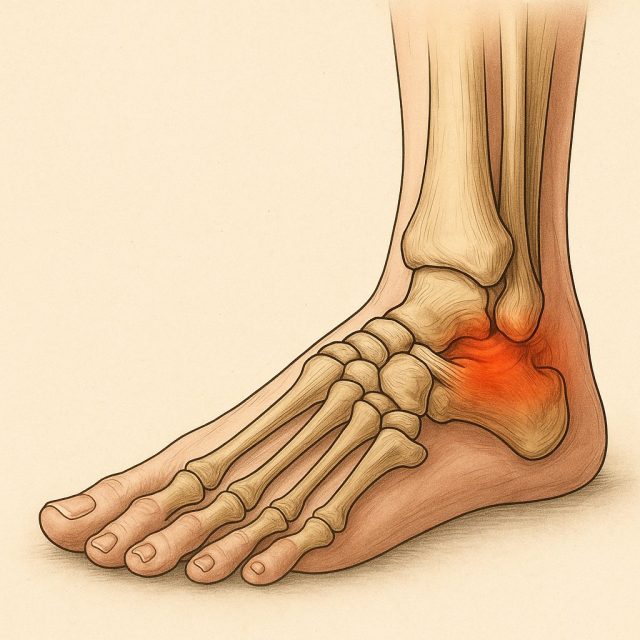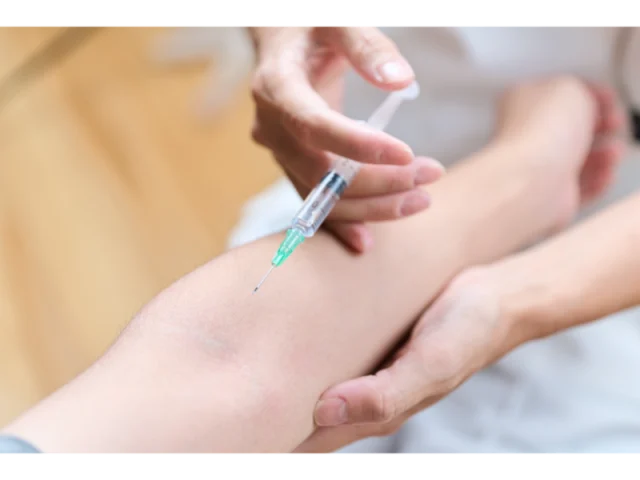Edema cream offers a practical and effective solution for those looking to cope with the unavoidable effects of modern lifestyles. Today’s fast-paced work routines, poor dietary habits, and prolonged inactivity are all contributing factors. These elements disrupt the body’s natural balance and cause fluid accumulation in certain areas. This condition often triggers edema, especially in the feet, knees, and joint regions.
Edema should not be seen as just a temporary swelling. Over time, it can reduce quality of life, limit mobility, and make everyday activities more difficult.
At this point, edema cream stands out with its ease of use and ability to offer localized relief. However, not every edema cream delivers the same results. Because the underlying cause of edema can vary—ranging from circulatory issues and trauma to improper footwear, hormonal imbalances, or prolonged standing. Therefore, choosing the right product is the most crucial step in achieving effective results.
In this article, we will examine what edema is, why it occurs, when using an edema cream may be beneficial, and what to consider when selecting a product. We will approach the topic from a scientific perspective. If you’re ready to discover real solutions and take control of edema problems, you’re in the right place. Let’s begin.
Table of Contents
- What Is Edema? Why Does It Occur?
- What Is an Edema Cream and What Does It Do?
- Using Cream for Knee Edema
- Choosing an Effective Cream for Foot Edema
- What to Consider When Choosing an Edema Relief Cream
- Herbal vs. Medical Edema Creams
- Frequently Asked Questions
- Conclusion
What Is Edema? Why Does It Occur?
Edema is a condition characterized by visible swelling caused by the accumulation of excess fluid between body tissues. This condition is most commonly seen in the ankles, around the knees, hands, neck, and under-eye areas. The primary mechanism behind edema is the escape of fluid from the blood vessels. The lymphatic system is unable to reabsorb this fluid quickly enough. This physiological disruption can lead to both cosmetic and functional issues over time.
Edema should not be considered merely a superficial swelling. Depending on the underlying causes, it can develop either locally (in a specific region) or systemically (throughout the body), directly affecting a person’s daily life. Localized edemas are often seen after trauma, sprains, or surgery. Systemic edemas, on the other hand, are usually linked to internal organ-related health issues.
There are many factors that can lead to the formation of edema. Physical trauma, surgical interventions, rheumatic joint diseases, heart failure, kidney and liver conditions are just a few examples. Additionally, prolonged inactivity, incorrect exercise practices, or standing for long periods can significantly increase the risk of edema. A sedentary lifestyle slows down circulation in the body. This makes fluid accumulation more likely.
In particular, professional athletes or physically active individuals may experience rapid edema development in specific areas. This is often due to sudden strain or musculoskeletal injuries. In such cases, swelling and tenderness are most frequently observed around the knees, ankles, and hips.
When edema occurs, the body attempts to balance the situation through certain defense mechanisms. However, these mechanisms are not always sufficient. When they fail, the swollen area becomes firm and often painful. This not only disrupts physical comfort but also negatively affects social life.

What Is an Edema Cream and What Does It Do?
An edema cream is a specially formulated product applied topically (on the skin’s surface) to areas where fluid buildup is concentrated in the body. These creams aim to alleviate symptoms such as swelling, tenderness, and pain caused by underlying edema. Their mechanism of action varies depending on their ingredients. However, they generally contain anti-inflammatory agents, vasodilators, and compounds that support lymphatic circulation.
As a result, the pressure caused by fluid retention decreases. Simultaneously, pain in the affected area is also reduced.
Edema creams not only relieve symptoms. They also support the body’s healing process by improving circulation in the affected region. They are especially effective in cases of acute trauma, sprains, and minor injuries.
There are two main types of edema creams on the market: herbal-based products and those containing pharmacological active ingredients. Herbal creams are typically used for mild to moderate cases. They may include natural compounds such as horse chestnut extract, arnica, menthol, and camphor. These substances, when applied to the skin, enhance local blood circulation. They also create a cooling and soothing sensation, helping reduce swelling more comfortably.
Pharmaceutical creams, on the other hand, often contain steroids or strong anti-inflammatory drugs. These products are generally prescribed for more serious trauma, inflamed conditions, or clinical cases that require medical supervision. Their use should be limited and monitored. Prolonged use may lead to side effects such as skin thinning, irritation, or other dermatological reactions.
Using Cream for Knee Edema
The knee joint is one of the primary joints that bear the body’s weight and is used most frequently in daily life. Therefore, it is extremely sensitive to impact, strain, and trauma. Situations such as sports injuries, meniscus problems, ligament tears, or rheumatic diseases are common. These are among the main factors that trigger the formation of edema in the knee area.
Edema in the knee presents not only as swelling. It can also appear as restricted movement and pain. This condition can make even simple actions like walking or climbing stairs difficult for the individual.
In such cases, early intervention is of great importance. An edema cream with the right formulation helps reduce fluid accumulation in the area. It also aids in combating inflammation. This reduces pressure on the knee and helps preserve mobility to a large extent. Creams are particularly effective when used during the first few days after trauma. Ensuring the knee is clean and dry before application enhances the product’s effectiveness.
The cream should be applied gently using the fingertips, in circular motions to allow it to absorb into the skin. This application method not only helps the cream penetrate the skin. It also facilitates the movement of lymphatic fluid from the swollen area to surrounding tissues. This helps reduce swelling around the knee more quickly. It is important to perform the massage without applying too much pressure. Otherwise, the sensitive area may become further irritated.
Applying cold compresses intermittently to the knee area during cream use helps narrow the blood vessels. It also reduces fluid leakage. Short-term rest is another crucial factor that supports the healing process. A constantly moving knee has difficulty recovering. Therefore, the edema may take longer to resolve.

Choosing an Effective Cream for Foot Edema
The feet and ankles are among the areas where body fluids accumulate most due to the effect of gravity. The vascular structure in these regions represents the endpoints of the circulatory system. For this reason, factors such as prolonged standing, sedentary sitting, and hot weather can contribute to edema. Wearing improper footwear can also easily lead to edema in the feet. Swelling that occurs by the end of the day not only causes discomfort. It also reduces mobility and may lead to pain.
Edema in the feet is not caused solely by external factors. It can also be related to internal, systemic health issues. Conditions such as kidney diseases, venous insufficiency, lymphatic circulation disorders, or hormonal imbalances may increase fluid accumulation in this area. Therefore, edema in the feet should not be considered just a temporary issue. It should be seen as a warning signal from the body.
One of the most practical methods for reducing these complaints is the regular use of an effective edema cream. However, it is important to be careful when selecting a cream. The product should contain active ingredients that promote blood circulation and have anti-inflammatory properties. Natural components such as horse chestnut extract, menthol, rosemary, and arnica provide a cooling sensation and instant relief in the affected area. These ingredients also support the breakdown and drainage of the fluid beneath the skin.
The cream should be applied regularly, twice daily once in the morning and once in the evening. It should be massaged gently starting from the ankle and moving upward with light pressure. This technique follows the natural flow of the lymphatic system. It helps transport the accumulated fluid from the swollen area to healthier regions. The massage also stimulates the muscles, which supports passive circulation.
What to Consider When Choosing an Edema Relief Cream
Although there are many edema creams available on the market, not every product delivers the same results. Therefore, users should avoid selecting a random cream. Instead, they should choose a product with ingredients that suit their specific needs. The method of treatment may vary depending on the cause of the edema.
Here are the main criteria to consider when selecting an edema relief cream:
- Active Ingredients: It is important that the cream contains natural circulation-supporting components such as arnica, horse chestnut, menthol, camphor, and rosemary oil. In medical products, formulations that include heparin derivatives, NSAIDs, or corticosteroids may also be effective.
- Targeted Application Area: Creams that are specially formulated for the feet, knees, lower back, or neck provide a more direct effect on the intended area.
- Absorption Time: A cream that absorbs quickly into the skin and does not leave a greasy residue enhances user comfort. It also supports the cream’s effectiveness.
- Non-Allergenic Content: For individuals with sensitive skin, it is advisable to choose creams that are free from parabens. They should also be free from artificial colorants and synthetic fragrances.
- Clinical Approval and User Feedback: Products that are dermatologically tested and receive positive feedback from users are often preferred.
Herbal vs. Medical Edema Creams
Topical creams used in the treatment of edema generally fall into two main categories: herbal-based creams and medical (pharmaceutical-grade) formulations. Each group offers its own set of advantages. However, understanding the differences between them is essential for making the right choice.
Herbal Edema Creams
Herbal creams are typically available over the counter without a prescription. They are effective in treating mild to moderate edema, especially swelling caused by impact or sprains. These creams contain natural ingredients like horse chestnut extract, arnica, rosemary oil, ginger, and menthol. Thanks to these ingredients, they help increase circulation while providing a soothing effect.
Advantages:
- Generally well tolerated by the skin.
- Low risk of side effects.
- Reduces mild edema with regular use.
- Easily integrated into daily skincare routines.
Things to Consider:
- Their effects become noticeable over time with consistent application.
- They are not sufficient alone for severe or pathological edema.
Medical Edema Creams
Medical creams are usually obtained from pharmacies, either with or without a prescription. They often contain anti-inflammatory agents (NSAIDs), vascular protectants, or active ingredients that specifically target edema. These products are more effective in certain cases. These include post-surgical swelling, chronic lymphedema, or inflammation-related conditions.
Advantages:
- Provide fast and strong relief.
- Help control both swelling and pain.
- Their effectiveness is supported by clinical studies.
Things to Consider:
- Prolonged or improper use may cause skin irritation.
- Certain ingredients may not be suitable for pregnant women, children, or individuals with allergies.
- Prescription-strength formulations should always be used under medical supervision.

Frequently Asked Questions
How Long Does It Take for Edema Cream to Work?
The effectiveness of the cream depends on its ingredients and the severity of the edema. Noticeable relief is generally experienced within a few days with regular use.
What Is the Best Cream for Knee Edema?
Products containing heparin, ibuprofen, or horse chestnut may be effective for knee edema. However, a professional evaluation is important before selecting a product.
Are Herbal Edema Creams Safe for Pregnant Women?
Some herbal ingredients may be unsafe during pregnancy. It is essential to consult a doctor before use.
Is Cream Alone Enough for Foot Edema?
In mild cases of swelling, cream may be sufficient. However, conditions such as venous insufficiency or kidney disease may require additional treatments.
How Many Times a Day Should Edema Cream Be Used?
The frequency of use is indicated on the product label. In general, it is recommended to apply the cream twice daily. However, a doctor‘s advice should be prioritized.
Conclusion
Edema in the body is a serious issue that directly affects quality of life. Therefore, it is important to consider not only the swelling itself but also the underlying cause. An edema cream can be an effective aid in resolving this issue when used with the right formulation and proper application. The chosen cream may be herbal or medical. It should always be used with the individual’s health condition in mind.
Clinical approaches clearly show how crucial personalized planning is in the treatment of edema. Each individual’s lifestyle, circulatory structure, and edema development process is different. For this reason, using an edema cream alone does not provide a complete solution. For effective results, the product must be applied properly. This should be combined with healthy lifestyle habits as part of the daily routine.
Simple measures can significantly reduce edema formation. These include regular exercise, adequate water intake, balanced nutrition, and avoiding prolonged inactivity. The cream should be seen as a complementary part of this holistic approach. When used correctly, it not only reduces swelling. It also contributes to improving the individual’s overall quality of life.
In conclusion, edema cream is not just a topical product. It is also a supportive step in a conscious treatment process.
Feel free to visit our blog page to read more articles.























 Youtube Videolarım
Youtube Videolarım



